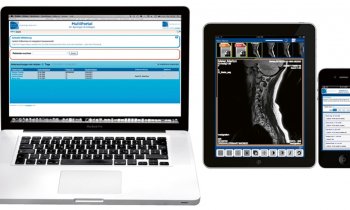Developing Integration Capabilities Presents a Real Opportunity for Vendors
Healthcare facilities in Europe are currently working to create a unified digital patient record. In tandem, medical imaging vendors are developing and offering cardiology information systems (CIS) with advanced functionalities and easy integration capabilities with enterprise-wide information systems. As a result of such trends, image management-based information systems are set to witness revenue growth.
New analysis from Frost & Sullivan, Clinical Information Systems in Europe - Cardiology, finds that the market earned revenues of $54.5 million in 2010 and estimates this to reach $104.8 million in 2017.
The ability to increase departmental efficiencies and optimise workflow is the most critical feature and functionality that a CIS can offer. In addition to this essential feature, deploying a CIS allows the handling of other disparate tasks such as order management, patient and materials management and clinical information sharing.
“The increasing cardiology workload and insignificant reimbursements are driving the need for enhanced productivity solutions,” notes Frost & Sullivan Research Analyst Simone Carron-Peters. “The emergence of enterprise image and information management solutions will bring greater workflow benefits.”
The workflow benefits of an enterprise-wide image management solution are also clear. The enterprise approach allows cardiologists, who have peripatetic working habits, to access their images from any DICOM-enabled location.
However, the high infrastructural costs of installing CIS and picture archiving and communication systems (PACS) pose a formidable purchase barrier. Unlike the radiology department, cardiology does not serve the rest of the hospital. Other departments in the hospital do not make use of cardiology PACS as extensively as they would utilise radiology PACS.
“Therefore, hospitals are sceptical about investing in cardiology IT,” explains Carron-Peters. “Some European countries like Spain and Italy are not even adequately equipped in terms of cardiology modalities, making it even more difficult to invest in an IT solution such as CIS and cardiology PACS.”
Research into the networked hospital environment reveals that cardiology PACS modules can depend on the existing radiology PACS infrastructure. Leveraging the existing radiology PACS infrastructure will prove appealing to the hospital management.
“On the other hand, vendor consolidation is spurring the development of integrated solutions, which is allowing end users to adopt the single-vendor approach and purchase an integrated solution in which all the technologies are compatible and can communicate with each other,” concludes Carron-Peters. “Vendors are constantly faced with the challenge of finding and executing the most workable core architecture and portfolio to facilitate integration capabilities between modalities and optimise workflow.”
15.09.2011











